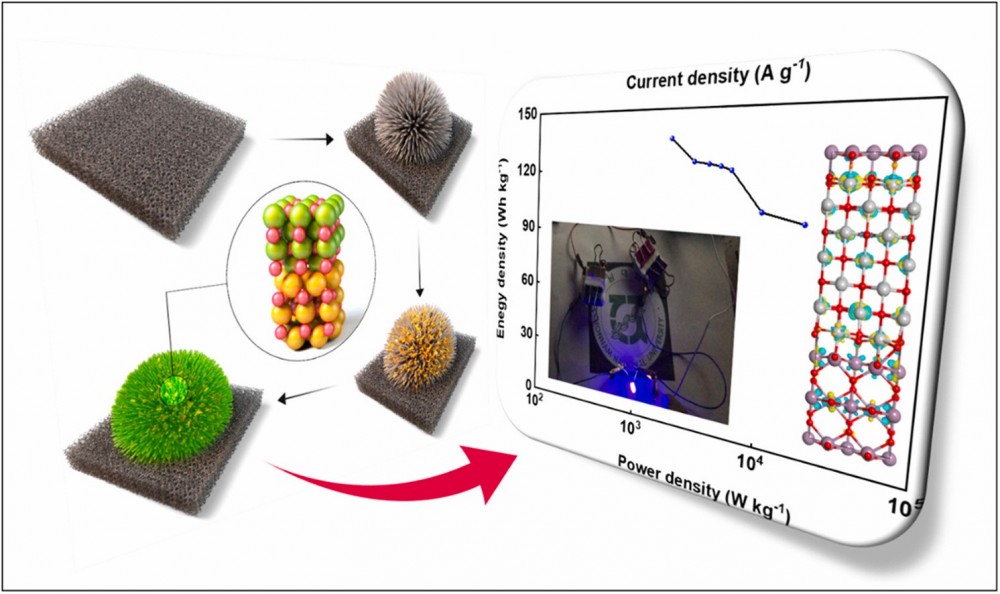
연구
Research Outcome
미래를 창조하는 포스텍 화학공학과
Interface-modulated uniform outer nanolayer: A category of electrodes of nanolayer-encapsulated core-shell configuration for supercapacitors
- Title of paper
- Interface-modulated uniform outer nanolayer: A category of electrodes of nanolayer-encapsulated core-shell configuration for supercapacitors
- Author
- [한정우교수 연구실] 코어-쉘 구조 슈퍼커패시터
- Publication in journal
- Nano Energy 81 (2021) 105667.
- Publication date
- 2021.03
[Abstract]
Capacity and cyclic stability are two major issues of interest for supercapacitors. We report here a category of electrodes that are core-shell type that is encapsulated by a uniform outer nanolayer. We demonstrate the efficacy of the type of electrodes with a model electrode of NiCo2O4/MoO2 core-shell encapsulated by atomic layer-deposited NiO nanolayer. The electronic modulation at the interface created by the outer nanolayer, verified by instrumental analysis and DFT calculations, provides a substantial amount of additional capacity, which is more than 450 C g−1 for the model electrode. The thin outer nanolayer becomes much suppler by drastic decrease in flexural rigidity, which is proportional to the third power of the thickness. This flexibility afforded by the thin nanolayer helps preserve the physical integrity of the encapsulated inner structure, thereby reducing the loss in capacity to less than 3% from more than 10% after 20,000 cycles of charge and discharge for the model electrode. An asymmetric supercapacitor with the model electrode and a carbon-based anode delivers an energy density of 136 W h kg−1 at a power density of 1800 W kg−1. This result is an indication that the nanolayer-encapsulated core-shell type electrodes would in due time put supercapacitors squarely on the map of lithium ion battery in terms of energy density but at the power density typical of capacitors.
DOI: doi.org/10.1016/j.nanoen.2020.105667
Link: https://www.sciencedirect.com/science/article/pii/S2211285520312404




